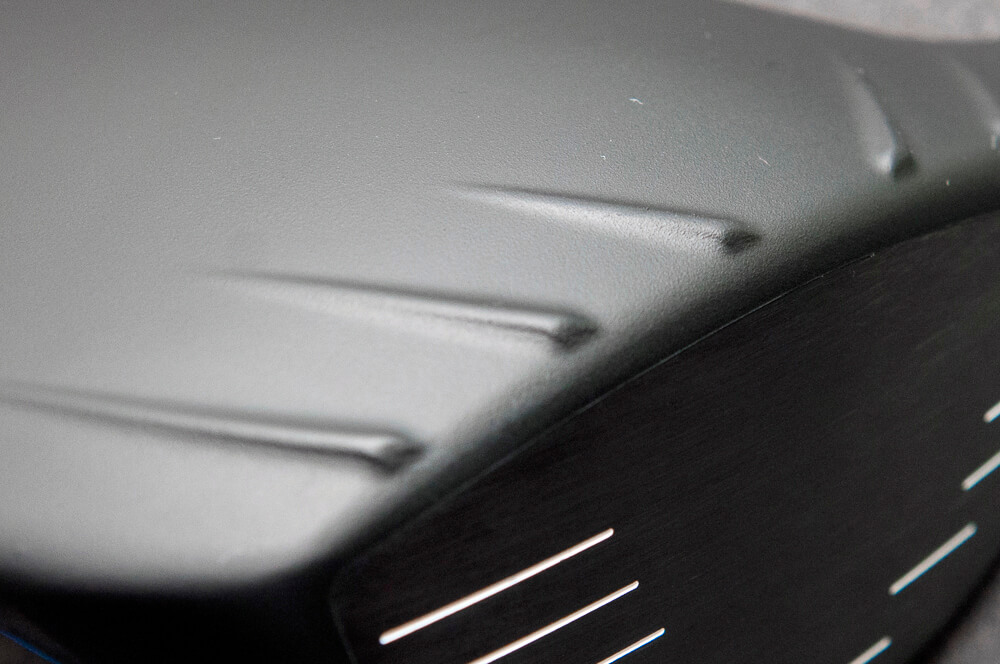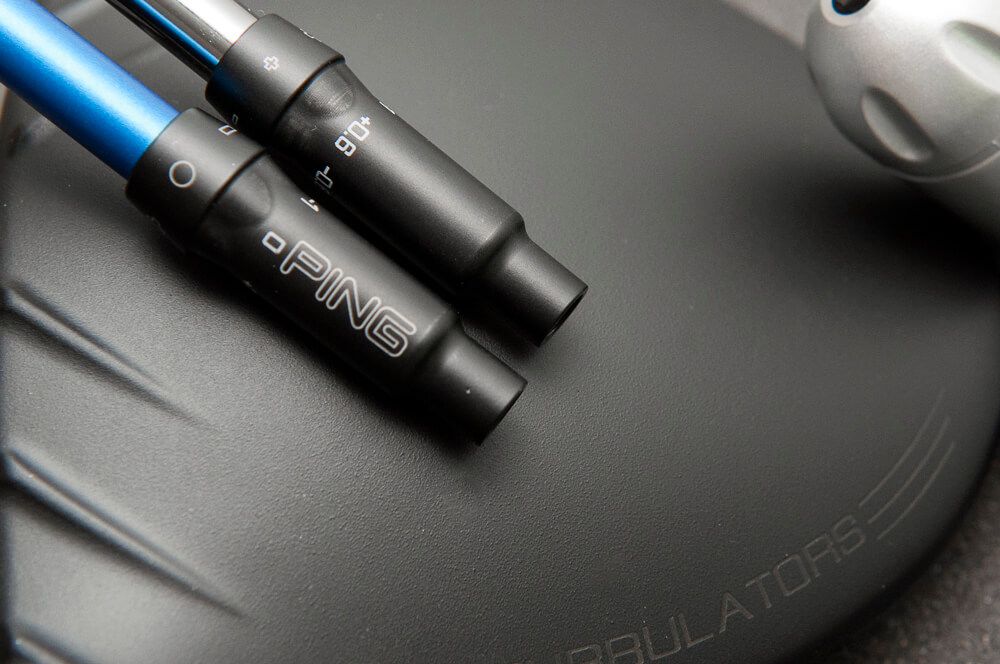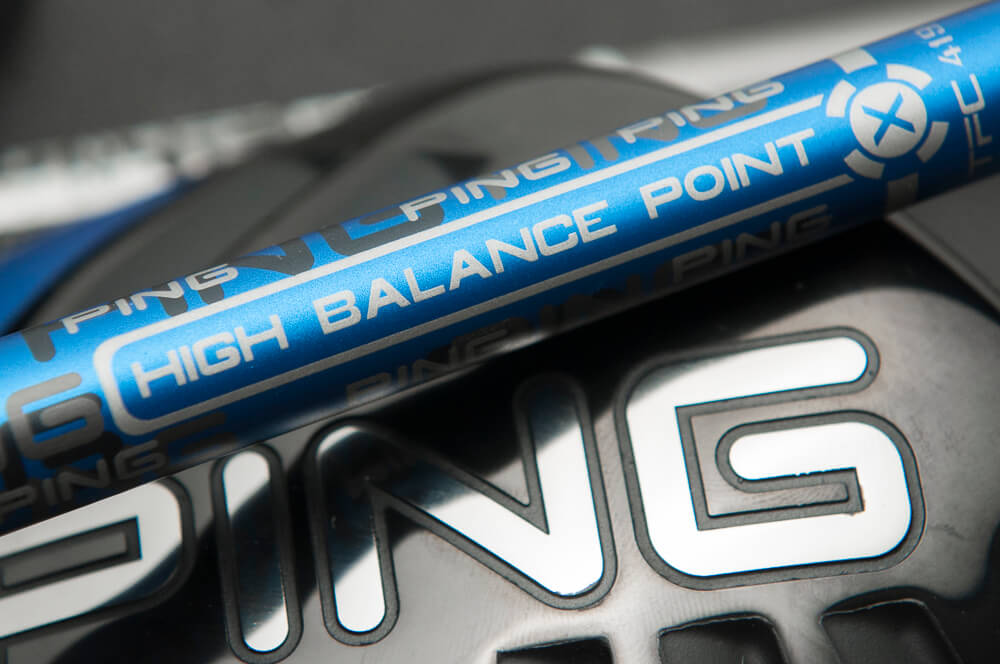Written By: Tony Covey
Monday we gave you a first look at PING’s new G30 Series of metalwoods, and today we’re back with some actual details.
Last month members of PING’s R&D Team invited us down to PING Headquarters in Phoenix Arizona to step us through the new lineup, and let us experience the new product for ourselves.
As you might imagine, PING’s R&D guys spared us no detail. We like that.
Bubba Long. . .and I’m talking about more than just this story
As we’ve told you countless times, we are #Datacratic. We’ll share some of the marketing angle with you, but ultimately we believe in the data and not much else.
Of course, when the MyGolfSpy owner (Golfspy X) starts hitting balls over the huge fence with the G30 Driver PING built specifically to contain Bubba Watson’s monster drives, data or no data, we quickly get to thinking that PING might have something special.
Then again, not everybody can hit it as far as X and Bubba. So take it for the great story that it is and move on.
While we’ll eventually get around to discussing things like forgiveness, playability, and all-around solid performance; the hallmarks of the G-series, the cutting to the chase of it dictates that we start with the most prominent feature of the new lineup.
Turbulators
Turbu-what?
Turbulators
…and lest there’s a chance you forget, PING has embossed the word on the damn crown. Subtle guys…really subtle.
One of the obstacles that absolutely every club designer struggles with is that a golf club head, particularly a driver head, is simply not aerodynamic by design.
You’ve got this giant mostly-flat face that transitions rather harshly to the crown. As far as moving through air and space as efficiently as possible are concerned, it’s less than ideal. It basically sucks.
In terms of pure aerodynamics, a smaller face with a more gradual, elongated, transition to the crown is a much more efficient design.
Unfortunately, that type of design doesn’t work particularly well for hitting golf balls (especially when you care as much about MOI as PING does), which makes it less than practical considering the intended purpose.
That’s where the Turbulators come in.
In the most basic of terms, Turbulators are a means to improve the overall aerodynamics of the clubhead without compromising on the intended purpose of the design (to hit golf balls long and straight), or substantially reducing head volume and, as a consequence, dramatically lowering MOI.
Here’s the really odd part, PING’s Turbulators actually increase drag. You’d think that would actually slow the clubhead down, right?
You’d be wrong.
Through the use of computational fluid dynamics (smoke tests and whatnot), PING’s engineers figured out that they could use precisely placed Turbulators to make the air stick (or flow closer) to the clubhead for a longer period of time.
Effectively what the Turbulators do is reduce the wake produced by the clubhead, which actually reduces the drag coefficient. Despite that initial increase in drag, the existence of Turbulators results in a net gain in clubhead speed for a majority of golfers.
Confused? Let me dumb it down for the guys like me:
Turbulators allow The New G30 to move through the air like a smaller-faced driver while still maintaining the low/rear CG placement that’s imperative to G-series design.
It’s all really scientific stuff.
By way of comparison, to get the same speed gains by changing the size of the driver head, (assuming the same shape), PING would have needed to shrink the G25 down to 362cc, and thereby reduce the MOI by 34%.
Nobody wants that. Not even TaylorMade (I kid…I kid)
The Downside of Aerodynamic Improvements
Let’s make one thing impossibly clear. Aerodynamics matter. It’s one of a few very obvious ways that golf companies can increase distance within the confines of the USGA’s tidy little box.
If, through design, you can speed up the clubhead (make the golfer swing faster), you’re going to increase ball speed as well, and folks, more ball speed equals more distance. That’s pretty simple.
Anybody want to argue that one?
The downside of aerodynamic gains is that they are exponential in nature. What that means is that guys who already swing fast will see more substantial gains than guys with average to below average swing speed.
For example, in PING’s own testing, the average gain in clubhead speed was .7MPH.
That’s good.
Unfortunately for the everyday crowd, the guys who saw the biggest gains (2 or more MPH) were guys who already generate between 112 and 120 MPH of clubhead speed. For higher swing speed guys, that translates to upwards of 6 yards or so over the G25.
The rich keep getting richer.
You average guys…the 85-90MPH crowd, realistically, any gains you see will be comparatively minimal. We’re talking about .5MPH or less of new-found clubhead speed on average, which translates to barely a yard in total distance gained.
Bummer, right? It is what it is, and PING isn’t going to tell you otherwise.
Turbulators. . . A Mass Problem
As we’ve already mentioned, one of the primary goals of PING’s G Series designs is to move the center of gravity as low and as far back as possible. Placing additional mass by way of Turbulators (approximately .5 grams) high and forward basically runs contrary to PING’s design goals.
To offset the additional high/forward mass, PING is using a new alloy to construct the G30’s face. T9S (9% aluminium) has a lighter density than the G25’s face material, and a stronger strength to weight ratio.
The new face material, along with Ti-811 body and crown construction, not only allowed PING to maintain the low/rear CG placement of the G25, they were actually able to move it slightly lower and slight farther back. The end result is a 1% improvement in toe/heel MOI and a 2% improvement in top/bottom MOI.
That might not sound like much, but when you consider that the G25 was already the most forgiving driver on the market (based on MOI), it’s scary impressive that PING was able to squeeze a bit more playability into the new G30.
As a quick aside for those of you who, like me, haven’t been much of a fan of the sound produced by G-series drivers, the new material also produces a deeper, less poppy (less crap-like) sound.
VS. The G25 Driver
The G25 was damn good. The G30 is actually better.
Between the MOI bump and the potential boost in clubhead speed, PING is claiming that they’ve been able to squeeze a little more distance and a little more forgiveness over what was already a pretty good driver.
The G30 should square up a bit better, and that squaring should effectively reduce spin by about 150RPM.
We did some preliminary testing with the G30 side by side vs. the G25. Before you look at the data, here are some pertinent notes:
- To account for the differences in loft between the two models, and 8.5° G25 head was set at 9° and tested against a 9° G30.
- Stock shafts in X-flex were used for both models.
- To collect our data, we used a Foresight GC2 Launch Monitor which requires a license for the desktop/simulator software in order to extrapolate roll and total distance. We don’t currently own the software, so reported distances are carry-only.
- Foresight GC2 does not provide a swing speed measurement without the accessory HMT unit, which was not available to us during testing.
In testing we saw an average increase in ball speed of 1MPH with the G30. With the differences in launch angle and spin rate, carry yardages were a push, but the numbers also suggest that with roll factored, the G30 would be slightly longer.
We also saw slightly better dispersion and yards offline numbers with the new model. Also worth a mention, using standard deviations in ball speed between the two clubs as the defining factor, the G30 was slightly more forgiving/consistent than the G25.
The preliminary results suggest a driver that improves on the previous generation, but probably doesn’t warrant an immediate upgrade, unless of course demo/fitting sessions reveal that you’re among the group that benefits significantly from those Turbulators.
Improved Adjustability
PING has been the subject of some consternation by golfers who feel like their implementation of adjustability is a bit…shall we say, lacking.
Previous incarnations allowed the golfer to adjust loft or face angle (depending on how you look at it) by only half a degree in either direction (1° of total adjustability). That’s significantly less than…well…everyone else in the industry.
The new hosel allows for a full one degree of adjustment in either direction (with a .6° option in the middle, if you prefer something more akin to the original). For those keeping score at home, that’s 2° of total adjustability.
PING’s no compromise approach meant that the hosel improvements had to be made without increasing mass. Not only was PING able to get to 2° without adding mass, PING’s adjustable hosels add zero additional mass compared with their more traditional glued offerings. I don’t believe any other OEM can make that claim.
Straight Flight Technology Is Back
Despite its age, the K15 (a dinosaur by modern standards) remains popular with PING fitters seeking to help golfers mitigate a slice.
While maybe nobody is going to come right out and say it, the G30 SF Tec is the effective replacement of the K15, albeit within one of PING’s signature lines.
The idea is to offer a club that offers significant slice correction without any attaching any stigma to the club. The G30 SF Tec doesn’t have DRAW stamped anywhere on it (it does say Turbulators), and there’s no offset either.
The shape is slightly non-conventional, and that will certainly turn some off of the SF Tec (myself included), but hell, if it corrects your ball flight, isn’t that all any of us should worry about?
Like the K15 the G30 SFT sits closed (PING uses the phrase rocks closed) – though not as much (2° vs. 5° in the K15), and offers a heel-biased CG placement and is designed to deliver the club face slightly closed to the path at impact.
The sum total of the design features results in up to 12.5 yards of shot correction.
For the guy who habitually slices, the G30 SF Tec will help you hit the ball straight. For the guy who already hits the ball straight the SF Tec model should allow you to hit the much-coveted draw, provided the obviously closed face (and that unconventional shape) isn’t too off-putting.
Custom Tuning Ports (CTP)
While you won’t find them retail any time soon (or ever, probably), PING offers CTP weights ranging from 4g to 17.5g which offer the ability to dial in your target swingweight with basically any aftermarket shaft, cut to any reasonable length.
Unfortunately, if you want to make any changes, you’ll have to send your driver back to PING and have them make the changes for you.
For better or worse, that’s just how they roll in the PHX.
Custom Tuning Ports are available for all clubs (drivers, fairways, and hybrids) in the G30 metalwoods lineup.
High Balance Point Shafts
One of the features of the G30 series that most golfers will probably overlook is the inclusion of PING-designed High Balance Point shafts.
As the name suggests, PING was able to shift the balance point of the G30 stock shafts higher, toward the grip (effectively counterbalancing the shaft). They were also able to reduce the overall weight of the shaft, which allowed for an increase in overall head weight without impacting swingweight. Any aftermarket stuff that shifts the scale can be handled with those Custom Tuning Ports we just covered.
As some of you may already know, a heavier head has greater inertia and creates a more efficient transfer of energy than a lighter one. That’s a recipe for both distance and forgiveness, which is what most of us say we want from our driver.
High Balance Point Shafts are part of every club in the G30 metalwood lineup.
G30 Driver Specifications
G30 Driver Stock Shaft Specifications
Weight is calculated assuming a 45.25″ finished length
G30 Driver Tour Shaft Specifications
*The Tour Driver ($30 upcharge) Shaft is designed by PING. It has lower torque than the stock shaft and has a stiffer tip to promote a lower trajectory. Finally, it offers what PING describes as a “Tour” look and feel (including a PVD finish).
Pricing and Availability
PING G30 Series Drivers will be hit retail sometime in late July or early August. MSRP for the driver is $385. As previously noted, a Tour shaft is available for a $30 upcharge.
Wrapping it All Up
Although the gains aren’t earth-shattering, we’re inclined to saddle the G30 driver with early favorite status for our 2015 Most Wanted Driver Test. The fairway will be a serious contender as well.
That said, I wouldn’t necessarily run out and replace your G25, but it’s certainly worth finding out if the Turbulators give you a boost (nobody at PING is suggesting they’ll work for everyone).
If they do...buy the G30. If they don’t, your G25 is still a pretty damn awesome club.
From my perspective, the improvements to sound and feel alone place the G30 significantly ahead of the G25. That’s purely an issue of personal taste. Quite frankly, the G30 is the first PING G-series driver I’ve ever loved.
Performance notwithstanding, it’s actually the first I’ve even kinda liked.
Given the exceptional performance we save from the G25 lineup, it’s not enough for the G30 series to be good. It has to be great. That’s the tradition, that’s expectation, and not surprisingly, that’s exactly what PING has delivered.
We are unquestionably impressed.
If there’s any issue for PING as far as the G30 series is concerned it’s this: With the subtle design refinements, performance gains, the Turbulators (which technically fall under performance gains), and the new Tour Series shafts (designed to perform like high-end aftermarket shafts), the lines between the G-series and i-series have blurred slightly.
If you’re the kind of guy (a guy like me) who has previously (and habitually) thumbed your nose at PING’s G-series, the G30 should provide more than enough incentive to get over yourself.































Glenn
9 years ago
“Like the K15 the G30 SFT sits closed (PING uses the phrase rocks closed) – though not as much (2° vs. 5° in the K15), and offers a heel-biased CG placement and is designed to deliver the club face slightly closed to the path at impact.” And “provided the obviously closed face” are incorrect statements – the SFT does NOT have a closed face – the only difference is the heel biased CG placement – otherwise good article – thanks.